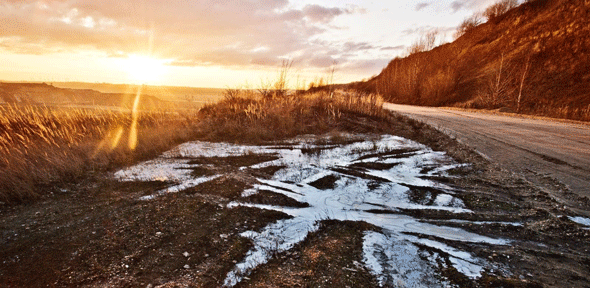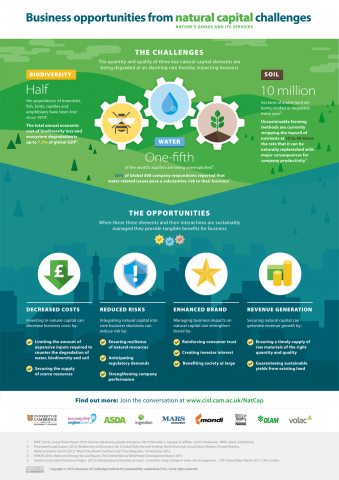
Doing business with nature: the need for commercial logic
Gemma Cranston
24 March 2015
Implementing measures to safeguard water, biodiversity and soil across supply chains makes sense. We know it, CSRs know it, but do CEOs know it? A quick scan of the websites of the world’s biggest companies suggests that only a select few really get it. A lack of evidence of the commercial benefits has become a major barrier to business increasing sustainability – just when we need action the most.
In January, a report by the independent government advisory body, the Natural Capital Committee, found that the decline in England’s natural environment is harming the economy. As part of its 25-year investment plan, the Committee proposed increasing green spaces and improving air quality to save money on the NHS, and creating wetlands to prevent flooding from disrupting farming, transport and business activity. To my mind, this is how companies should be thinking, but on a wider scale. Managing risk means boosting sustainability across global supply chains, taking into account increasing external pressures like climate change and shifting consumer demands from a rapidly growing population.
What is at threat is ‘natural capital’; balanced ecosystems, groundwater and healthy soils, which provide commercial value to the local economy and to individual companies themselves. These are being depleted at speed. UN research shows one-fifth of the world’s aquifers are over-exploited, WWF says around half of the world’s populations of birds, reptiles and amphibians have been lost since 1970, and the World Economic Forum states that unsustainable farming methods are stripping topsoils of nutrients at 10 to 40 times the rate at which they can be replenished. When it comes to translating this damage economically, The Economics of Ecosystems and Biodiversity (TEEB) estimated the total cost at an astonishing 3.3–7.5% of global GDP.
 Forward-thinking business leaders are already responding to these challenges, as shown in a recent report by the University of Cambridge Institute for Sustainability Leadership (CISL). Agribusiness Olam International, for example, is expanding the water holding capacity and nutrition of soils, to protect its Californian orchard yields from increasingly likely drought. The supermarket Asda is helping to reforest large areas of Costa Rica, to safeguard the ecosystems its banana trees rely on for reproduction.
Forward-thinking business leaders are already responding to these challenges, as shown in a recent report by the University of Cambridge Institute for Sustainability Leadership (CISL). Agribusiness Olam International, for example, is expanding the water holding capacity and nutrition of soils, to protect its Californian orchard yields from increasingly likely drought. The supermarket Asda is helping to reforest large areas of Costa Rica, to safeguard the ecosystems its banana trees rely on for reproduction.
Of course, these are only small steps in the right direction. The three core elements of natural capital – water, biodiversity and soil – are intrinsically linked and shouldn’t be considered in isolation. Applying fertiliser to replenish soil with nutrients, for example, isn’t enough on its own to restore ecosystems if there’s a lack of water too. It won’t even guarantee healthy soil; some farming practices undermine the substructure of soil, and cocoa crop is increasingly grown on steep slopes, which causes top-soil to be eroded. And, unless the vast majority of major companies work to protect natural capital, wherever their supply chains are based, the overall impact will be negligible. We need to take a more holistic approach.
Over the coming months, CISL is inviting the world’s biggest food, beverage and forestry companies to join business leaders already participating in our Natural Capital Leaders Platform, to increase their understanding of natural capital and – crucially – to identify new commercial opportunities from protecting it. By this I mean financial savings, security of supply, enhanced brand and even additional income – all of which can be achieved by taking action.
Collaboration between business and academia holds the key to finding the commercial logic for safeguarding natural capital. With access to the latest science, businesses are more likely to determine appropriate and long-lasting solutions that reverse current downward trends, and safeguard against unintended consequences. This is how to effect change at scale.
Companies have a clear moral responsibility to prevent and mitigate any environmental damage they cause; nobody is disagreeing with that. But it’s the business case for action within a changing global context that will get many more CEOs on board to protect natural capital; this alignment of sustainability with profitability.
First published in CSRwire Talkback.





